Curdled Cake Batter can be alarming but it is easily fixed. Have you ever creamed butter and sugar together into a light fluffy mixture? And then, when eggs are added one at a time or all at once, the light, fluffy mixture breaks down separating into clumps that look like rice in liquid? Depending upon how much butter and sugar have been creamed one or two eggs might not do it. However, the third or fourth cause the dreaded curdling or breaking of the mixture.
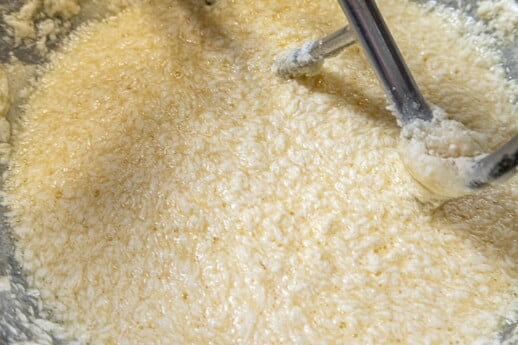
Emulsions
Many articles will tell you it’s the temperature of the eggs and butter. When you beat the butter and sugar then add eggs an emulsion is created. Most emulsions occur in baking when fat is suspended in water. Eggs contain water in the whites. However, at some point, the mixture will curdle or break if too many eggs are added because the fat from the butter cannot hold any more water. This won't happen when adding yolks alone, because they don't have water. Since yolks are fat, adding fat to fat isn't a problem.
Avoiding Curdled Cake Batter
Having the butter and eggs around 72° to 74°F helps since adding cold eggs to a warmer creamed mixture can cause the butter to seize breaking into little clumps which isn't curdlig. Covering the refrigerated eggs in hot water while the other ingredients are being assembled will ensure they will be warmed when needed.
Although room temperature ingredients are helpful, I rarely remember and it honestly doesn’t matter.
Remember too much water will cause the curdling also as will not beating the eggs long enough for the water and fat to come together.
Easy Fixes for Curdled Batter
There are basically two ways to fix the problem. The first is to simply raise the speed of the mixer. But this isn’t the best solution because it can ramp up the gluten in the cake batter making it less tender.
The best way to fix curdled cake batter is simply to add the flour and mix on low. It will all come together in a beautifully emulsified batter with no hint of curdling.
At the end of some cake recipes they will add the flour and liquid alternately to the mixture in the bowl, starting and ending with the flour. That's to prevent the mixture in the bowl from curdling. If you added the liquid first, chances are it would curdle, so the flour always goes in first and last.
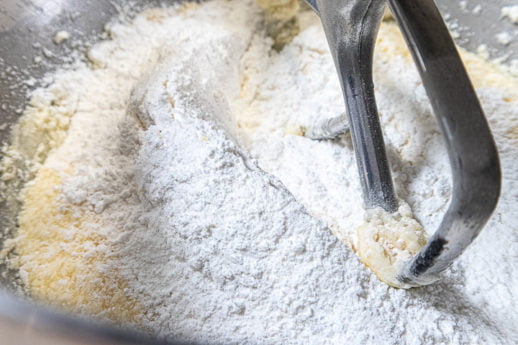
Recently, I’ve seen a number of articles that suggest adding a couple of tablespoons of flour as the curdling appears. But this isn’t necessary. As you can see by the photos, add all the flour after the eggs have been added and it will come together as if there had been no curdling at all. Just remember to beat on low to medium low.
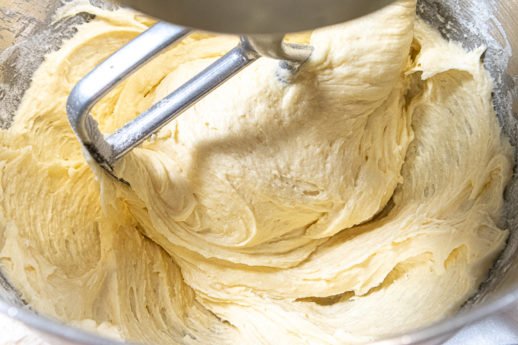


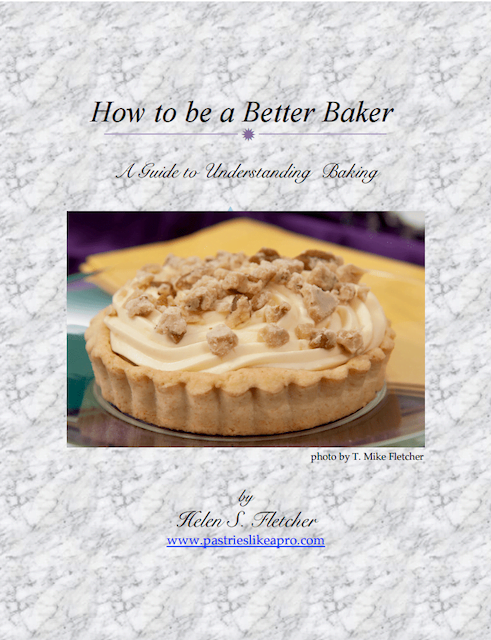

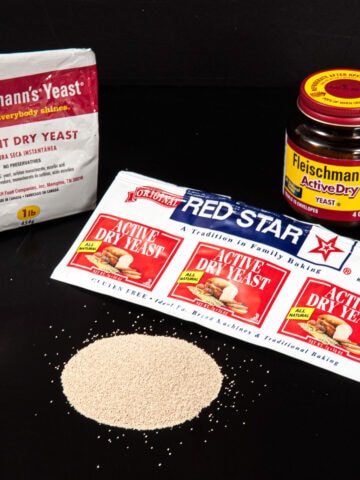
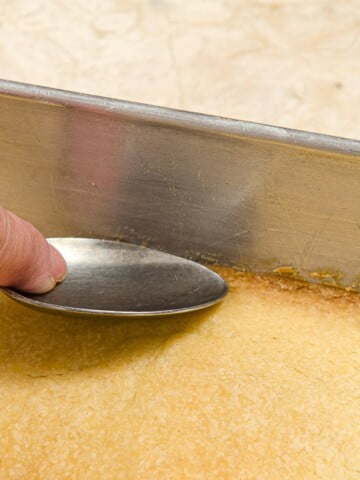
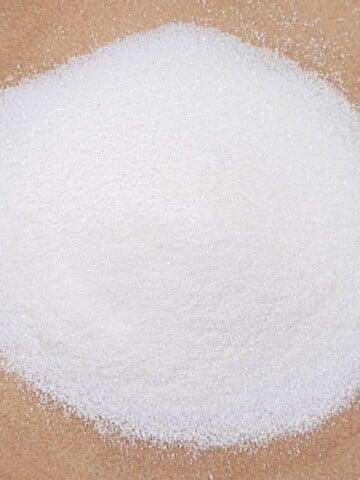
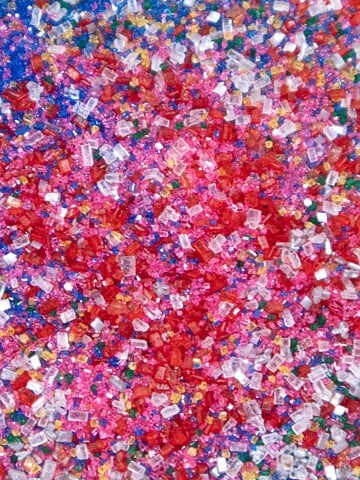
Dusty Knaebe says
I see this information is from a couple of years ago, so i don't know if you will see this, but I have a question about a broken emulsion in cake baking. I made a banana cake recipe that a very special granddaughter found online. It came together beautifully until I added the 1 1/2 cups of mashed banana at the end as recipe stated. The batter instantly separated! Ohhh my gosh! My bananas had been frozen and brought to room temp, but i did not realize they would get so runny until I dumped it in all at one time! I whipped it and it looked a little better, so i baked it anyway. It did not rise at all. It was very heavy! Do you think it was A. too much liquid? B I should have put in a little at a time? C. Looked at your blog to see if you had a banana cake!? Could I have been able to save it do you think?
Helen S Fletcher says
Hi Dusty - what a terrible feeling it is to see your work not come together. A. Frezing anything with water in it will cause that water to come out when thawed. Think any frozen fruit, strawberries, other berries - they all exude a ton of liquid. B. That would have been a better choice. C. I have a great banana cake - The Fruit Basket cake uses a banana cake. However, the frozen bananas would have cause the same problems. To reduce the chance of curdling when adding fruit to a batter, alternate it with the flour mixture,making sure you add the flour first and last. Look at it this way - it was a learning lesson. I doubt you will do that again.
Mary says
Patience is the way to go.
If you blend all the eggs together in a jug then add the beaten eggs a little at a time while beating the creamed emulsion - no more split butter and sugar.
This is where the patience comes in. If you are going to spend time beating all that air into the butter and sugar why ruin it by dumping a whole egg in and drowning the mixture.
Helen S Fletcher says
But as you can see Mary, it all comes together in the end. The air is not knocked out, it's still there. You can see how gorgeous the batter is after the flour is added. I'm sure your way works also. Just which way to go.
Jill Taylor says
Hi Helen, I always enjoy hearing about your techniques and solutions. I also look forward in getting your blog every Thursday. Miss you!
Helen S Fletcher says
Hi Jill, thanks so much. I decided to try to blog twice a week with the Thursday one, my Tidbit Thursday blog. Smaller than the Monday one focused on one thing only. Time has flown and only seems to be getting faster. Hope all is coming along with you and I do miss you too. Even in my cold apt.
Bruce says
Thanks, Helen. I always understood alternating flour and liquid, but never knew why the flour needed to be last. Now I know.
Patsy says
“Add the flour and mix on low”. When do you add the liquid? Is the three part addition of flour and liquid still recommended? Thanks!
Helen S Fletcher says
Hi Patsy, the last paragraph states, "As you can see by the photos, add all the flour after the eggs have been added and it will come together as if there had been no curdling at all."
Mark Mayer says
In other words, once all the flour is added, then add all liquid that would normally alternate dry-liquid- dry? I assume some gluten has already formed from mixing the liquid from the eggs with the flour, so mixing in the liquid slowly would be necessary. Could we avoid the whole problem, by simply using the reverse creaming method ( mix all dry first in the standing mixer, coat with fat and a little liquid, raise speed, then add remaining liquid)? If we weigh the ingredients, this method is quicker and results in less cleanup. On another subject, I just purchased Craving Cookies with the idea that I’d give it to one of my sisters who is attending a cookie convention in Reno now. Confession: I opened the book and copied some recipes, which my family in Florence will sample later this month when we celebrate all the missed birthdays and two new babies that arrived during the pandemic. I cannot wait to try the cookies your mother unsuccessfully hid from you every Christmas.
Helen S Fletcher says
Hi Mark - The flour is added at the very end.....after all the liquids are incorporated. Everyone goes nuts over gluten development. There isn't enough in most cakes to worry about. The only time I think about gluten development is with bread. As to reverse creaming, I'll be writing about that because it is not applicable to all butter cake recipes. It is actually referred to as High Ration Cakes in which the sugar has to match or exceed the weight of the flour. If it is less, reverse is not suggested.
Reverse would not work here because you have 295 grams between the rice flour and cornstarch (not even sure these qualify since they aren't flour) and only 200 grams of sugar.
Glad to hear you purchased the book. I think you will love the Triple Layer Pecan Bars. They are truly different and so good. The dough is very thin but keeping it chilled or frozen makes it very easy to handle. Not sure how Mom managed because she didn't know about the chilling.
Hope I covered everything.
Mark says
Thank you, Helen. The math teacher in me gravitated to the “easiest” option. Had I given this more thought ( by the way, I experienced this curdling problem on Wednesday. You’re right- this can happen even with 70 F butter and RT eggs), I would’ve realized that there’s a reason, other than habit and reader familiarity, that so many great baking writers rely on the cream the butter and sugar method. Now… if we could only convince everyone to offer weights… and in grams!
Helen S Fletcher says
Hi Mark - you are right on about the grams. My best baker who had no training until working with me eventually opened his own business. While not a bakery, he did offer some baked goods. He swore by grams and uses only those to this day. I started my employees early and drove it home. That and scales. They are so simple to use and ensure consistency. I think a lot of bloggers are intimidated but grams are so much easier than ounces. Whole numbers are much easier than fractions.
Eileen says
Helen, as always, thank you for sharing your wisdom and experience.
Carolyn Duclos says
This is great info. Thanks !
Helen S Fletcher says
Thanks Eileen.